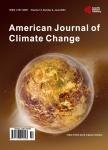Reclamation of Coastal Soil Salinity towards Sustainable Rice Production and Mitigating Global Warming Potentials in the Changing Climate
Reclamation of Coastal Soil Salinity towards Sustainable Rice Production and Mitigating Global Warming Potentials in the Changing Climate作者机构:Department of Environmental Science Bangladesh Agricultural University Mymensingh Bangladesh
出 版 物:《American Journal of Climate Change》 (美国气候变化期刊(英文))
年 卷 期:2023年第12卷第1期
页 面:100-115页
主 题:Coastal Paddy Soil Salinity Global Warming Phospho-Gypsum Cyanobacteria Proline
摘 要:Soil salinity has become a major constraint to rice productivity in the coastal region of Bangladesh, which threatened food security. Therefore, field experiment was conducted at salt stressed Shyamnagor Upazilla of Satkhira district to improve the soil salinity status, sustainable rice production and suppression of global warming potentials. Selected soil amendments viz. trichocompost, tea waste compost, azolla compost and phospho-gypsum (PG) were applied in the field plots one week prior to rice transplanting. In addition, proline solution (25 mM) was applied on the transplanted rice plants at active vegetative stage. Gas samples from the paddy field were collected by Closed Chamber technique and analyzed in by Gas Chromatograph. The 25% replacement of chemical fertilizer (i.e., 75% NPKS) with trichocompost, tea waste compost, Azolla compost and Phospho-gypsum amendments increased grain yield by 4.7% - 7.0%, 2.3% - 7.1% 11.9% - 16.6% and 9.5% - 14.2% during dry boro rice cultivation, while grain yield increments of 5.0% - 7.6%, 2.3% - 10.2%, 12.8% - 15.3% and 10.2% - 15.3% were recorded in wet Aman season respectively, compared to chemically fertilized (100% NPKS) field plot. The least GWPs 3575 and 3650 kg CO2 eq./ha were found in PG Cyanobacterial mixture with proline (T10) and tea waste compost with proline (T8) amended rice field, while the maximum GWPs 4725 and 4500 kg CO2 eq./ha were recorded in NPKS fertilized (100%, T2) and NPKS (75%) with Azolla compost (T5) amended plots during dry boro rice cultivation. The overall soil properties improved significantly with the selected soil amendments, while soil electrical conductivity (EC), soil pH and Na+ cation in the amended soil decreased, eventually improved the soil salinity status. Conclusively, phospho-gypsum amendments with cyanobacteria inoculation and proline solution (25 mM) application could be an effective option to reclaim coastal saline soils, sustaining rice productivity and re



